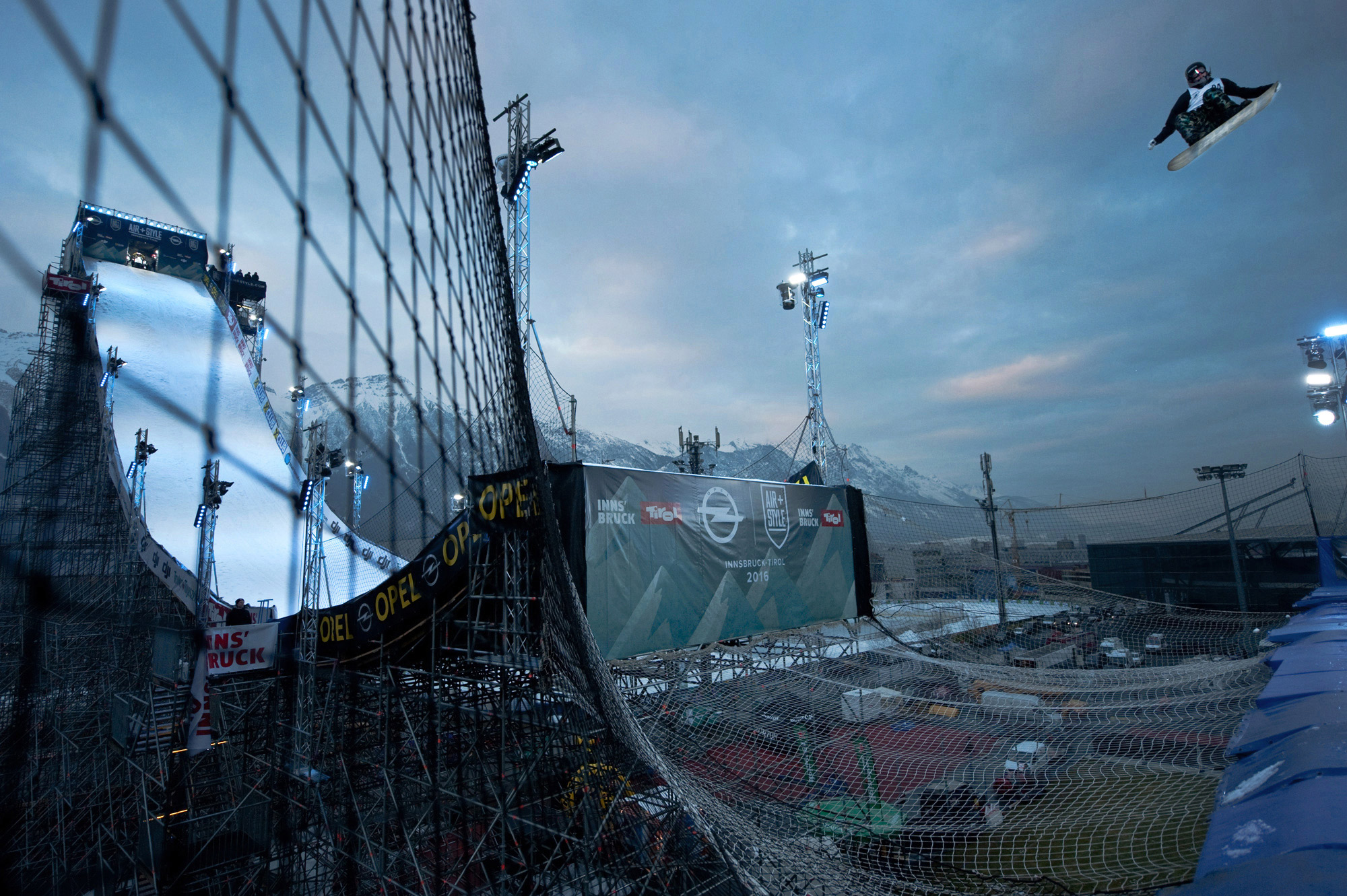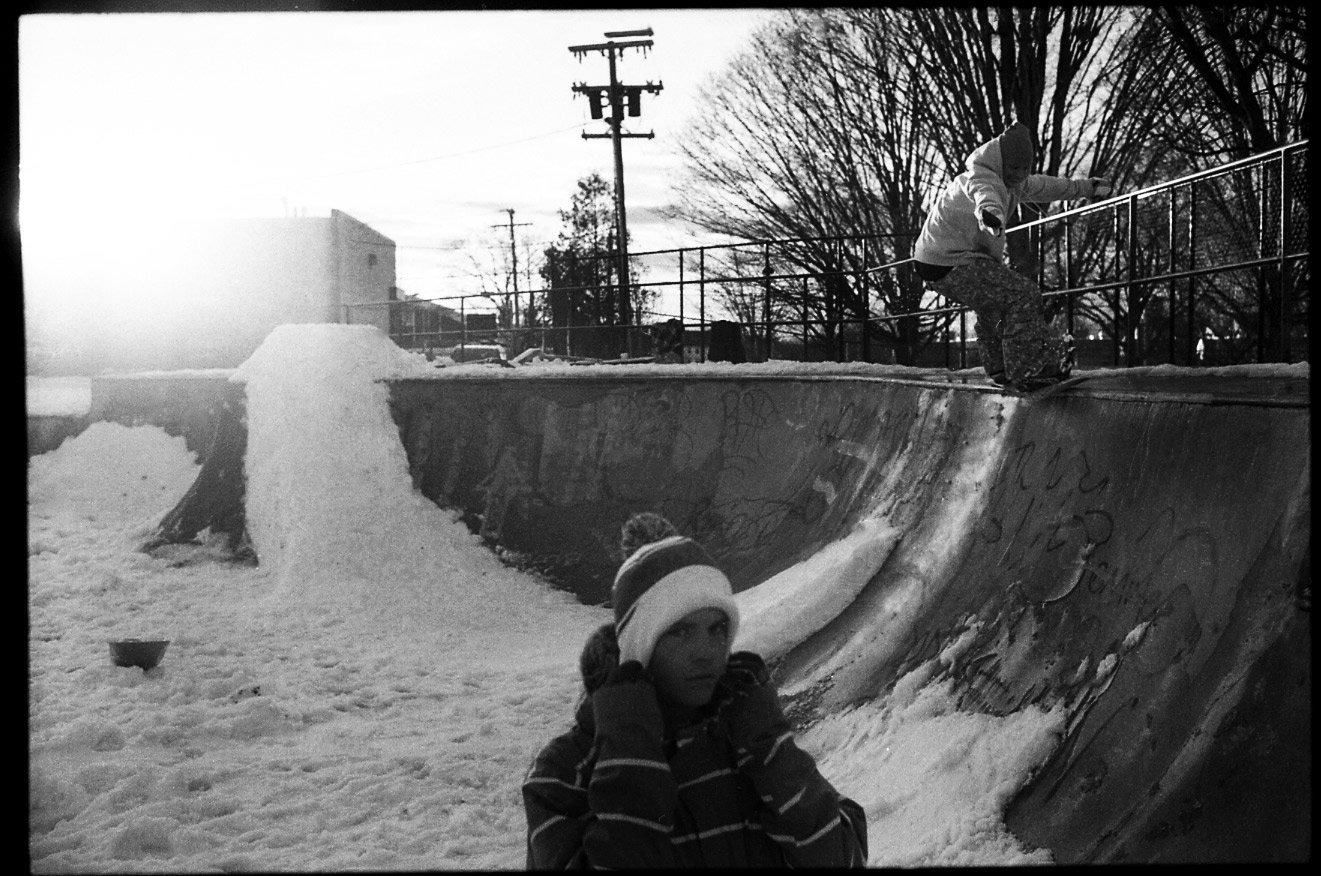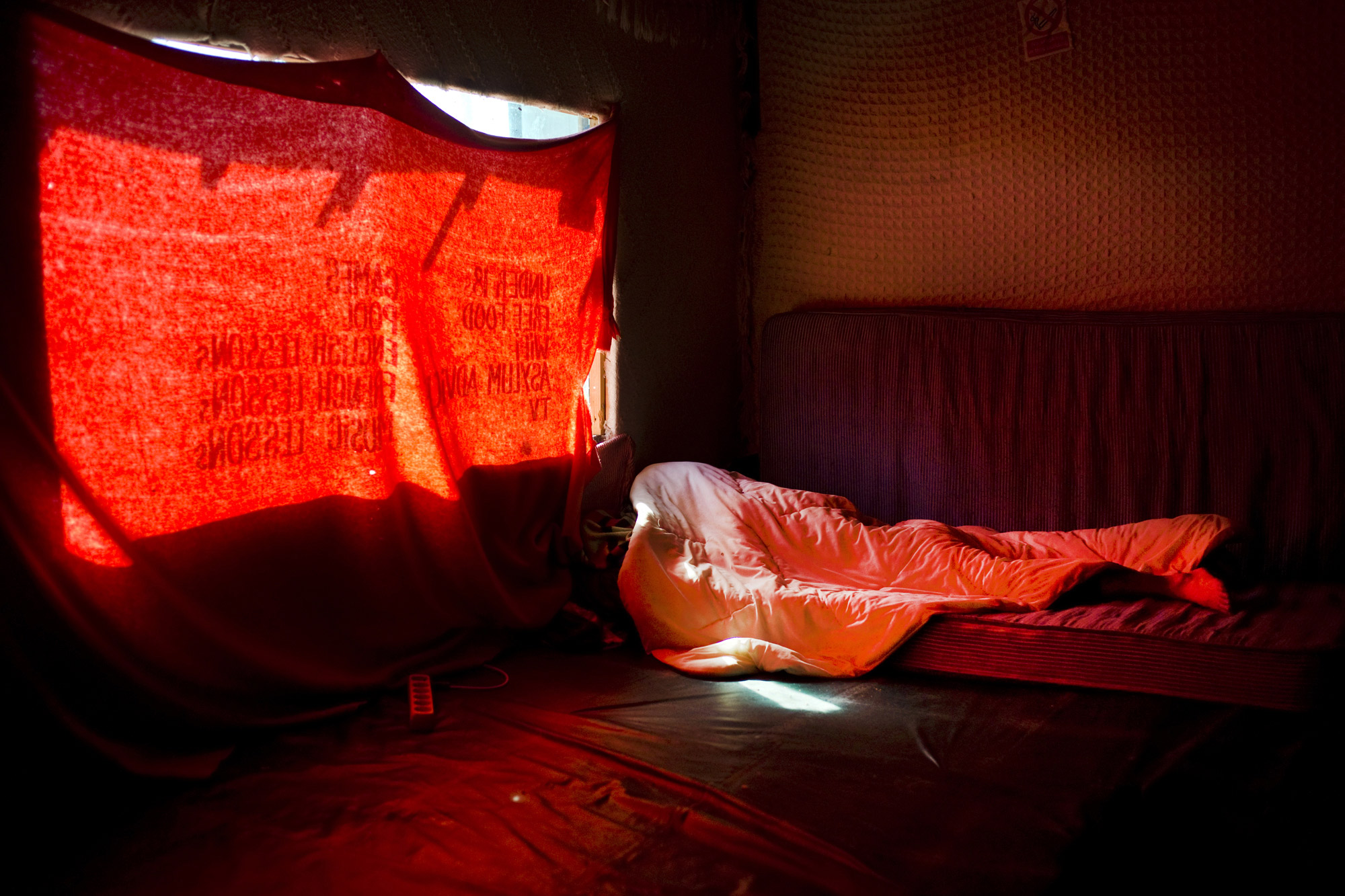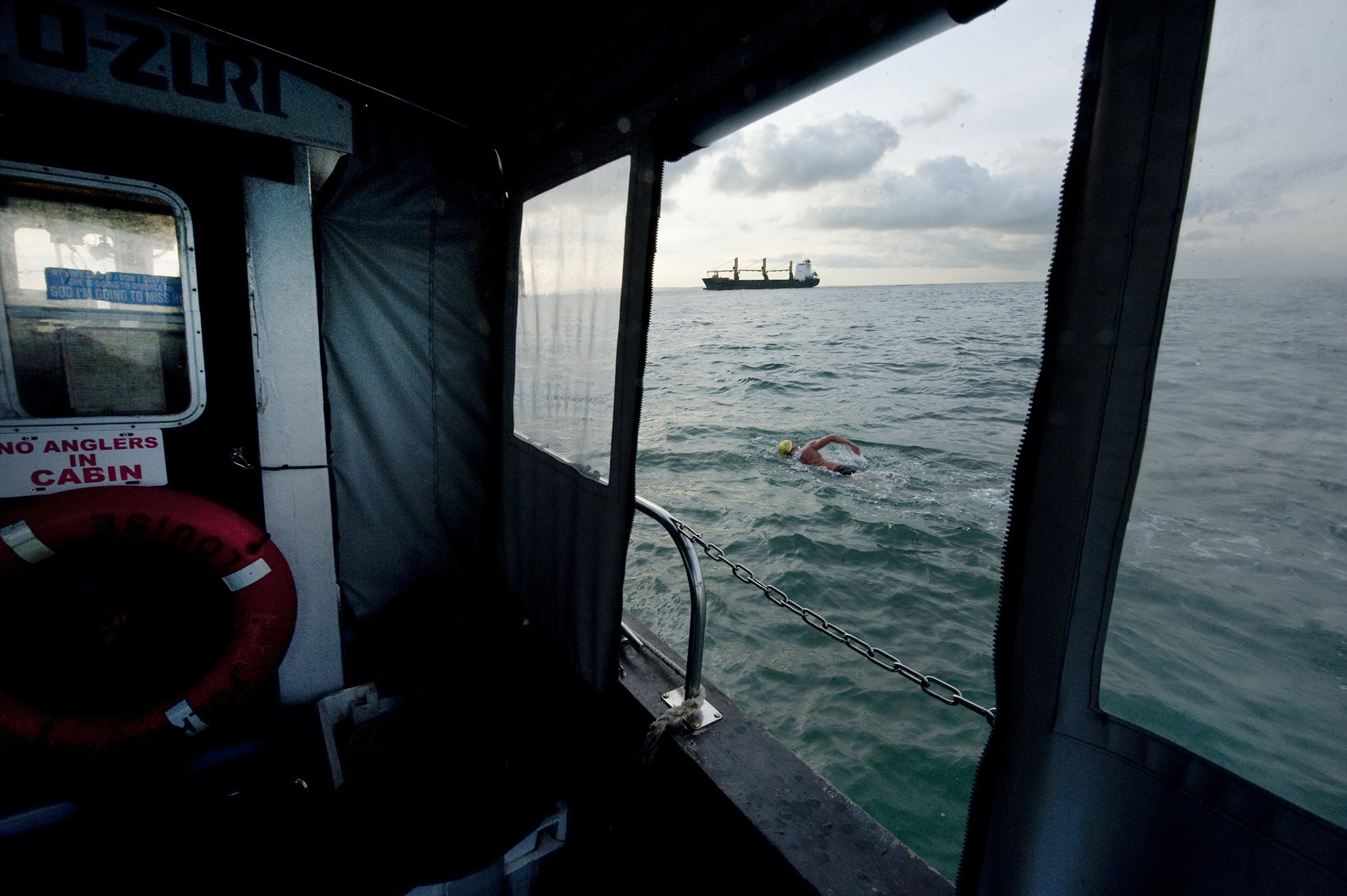Danny Burrows was born in the UK, but grew up in South America, Nigeria and the US, an upbringing which has undoubtedly shaped his internationalist outlook. He joined Mpora’s sister title Onboard Magazine in the 90s and quickly rose through the ranks to become its editor-in-chief.
Based in Chamonix and Munich, his words and pictures helped shape the direction of European snowboarding for more than 20 years, launching many a young ripper’s career and earning the mag a hugely-respected reputation on both sides of the Atlantic.
Since leaving Onboard Danny has continued to photograph action and adventure sports, but has also pursued other projects – notably a searing reportage series which documents the day-to-day lives of refugees in the camps of Northern France. Here he talks us through his inspirations, his idols and his five all-time favourite images.
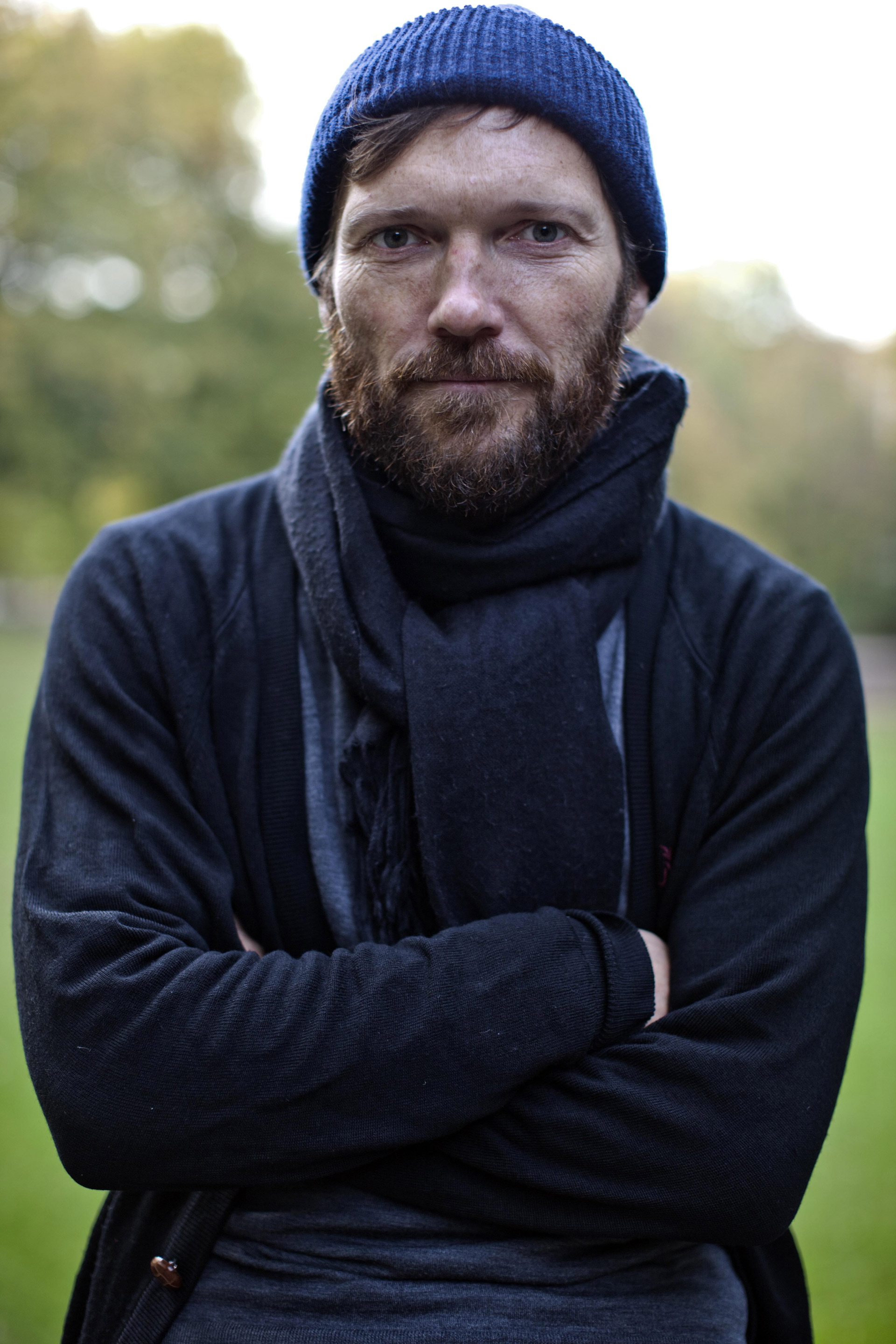
My first proper camera was a Contax T2. As children, my sister and I had snappy cameras and Polaroids, and my father was a keen photographer, but I didn’t get that until I moved to London and started assisting a fashion photographer. I made a lot of cups of tea, got belittled regularly and saw how shallow fashion is, but I did learn a few things about photography. My boss told me the Contax T2 was a must have – apparently Terry Richardson (who I am actually not a fan of) shot with one.
I’ve discovered my true photographic passion is documentary and current affairs. I’ve been involved in action sports for a long time so I’ve shot a lot of sport and lifestyle, but I’ve spent the last two and a half years in the refugee camps of Northern France working on a long term project called “Indeterminate State”. The people there, both volunteers and refugees, have been some of the most generous and loving people I have ever met and the experience of immersing oneself in a world beyond the shallow consumerism of our own has been truly life-changing.
Storytelling is massively important to me. To go through life learning about the world by means of secondhand sources is not only boring, it’s also superficial. I love the potency of photographs and their ability to change minds. Images like the little girl running away from a napalm attack in Vietnam, or the little boy washed up on a Greek beach made ordinary people get out and do extraordinary things to help others.
“I love the potency of photographs and their ability to change minds.”
I have too many photographic heroes to list. I’ve had the privilege of working with some of the most extraordinary photographers in action sports over the years; people like Blotto, Matt Georges, Dr. Zapalac, Sami Tuoriniemi, Pat Vermeulen, Vincent Skoglund, Peter Lundstrom and so many more. But I’m also inspired by documentary photographers like Mary Ellen Mark, Dayanita Singh, Diane Arbus and Giles Duley – perhaps the nicest person I have ever had the pleasure of meeting.
As a teenager I had an unhealthy interest in war, and I still find war photography truly inspiring. The depiction of chaos in images that are stuffed to the very edge of the negative with multiple layers of action – like the masterpieces by Magnum photographers and the likes of Tim Hetherington or Don McCullen.
If I had to pick one photo that I’d have loved to have shot it would be the picture of the lone man with his shopping, blocking a column of tanks as they crawl towards the protests in Tiananmen Square. It’s such a powerful image, perhaps one of the greatest to have mobilized people to demand an end to war, or to help in whatever way they can in a crisis. Had I shot that picture I would feel that I had done something worthy of praise.

